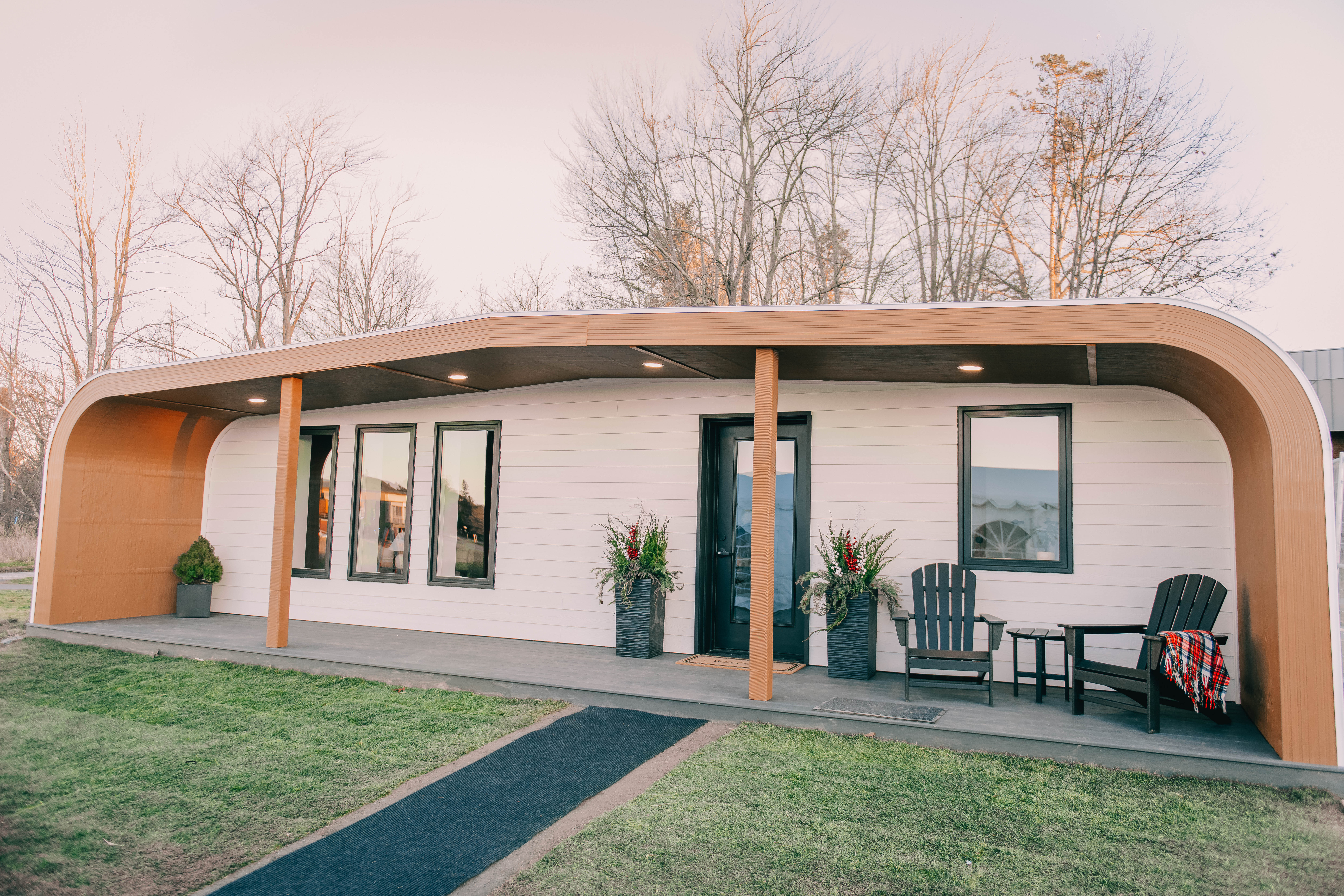The University of Maine Alumni Association hosted a webinar on Jan. 26 featuring Dr. Habib Dagher, executive director of the University of Maine’s Advanced Structures and Composites Center (ASCC), for the purpose of educating alumni and the community about the technological innovations happening at the ASCC, specifically their BioHome 3D project. This project, unveiled in November, is the world’s first completely renewable and recyclable 3D-printed house.
According to Dagher and the ASCC staff, the answer to Maine’s housing crisis may be right here in the trees.
The event took place via Zoom, opening with UMaine President Joan Ferrini-Mundy delivering remarks to the community.
With a status as the largest university-based research center in Maine — working with over 2,700 students from 35 majors and over 300 personnel — the ASCC has made major strides in sustainable technology before the bio-based house.
To test the performance of lightweight carbon composite strands on Prospect, Maine’s Penobscot Narrows Bridge, engineering students and staff implemented carbon strands and have been monitoring them since 2007.
The ASCC also 3D printed a boat — the 3Dirigo — using wood cellulose and bioresin, much like the BioHome 3D project.
This innovative technology and research are set to have a large-scale impact. Statistics presented by Dagher stated that there are 8 million low-income homes needed throughout the United States, and the BioHome 3D could be a sustainable solution.
“We did a survey and we have about a million tons of wood residuals every year in the region,” Dagher shared. “In Maine, we have all this wood waste, so we thought we could do it differently.”
One 600 square-foot home takes ten tons of wood residuals to print. These materials are also very cost effective, costing about 20 cents per pound.
The next steps for the ASCC are to take the project from a singular home to a complete neighborhood.
Through a partnership with non-profit organization Penquis, the ASCC is planning to create a 3D printed neighborhood in Bangor to house the homeless population.
These homes will be created in the Factory of the Future, a factory specifically designed for the innovation of houses and boats to be erected in the future. This factory would be placed near the Collins Center for the Arts, Dagher said.
The home is a learning experience for the ASCC and the community. According to Dagher, the project took longer than anticipated to complete. Students and staff were learning as they worked, and when the parts were complete, the home took less than a day to put all pieces together and had full running electricity in two hours.
The printer initially printed material at 30 pounds per hour, but finished at 120 pounds per hour. Eventually, additives will be put in for fire protection.
If you are interested in seeing the house, visit https://composites.umaine.edu/biohome3d/tour/ to schedule a time for a tour.








